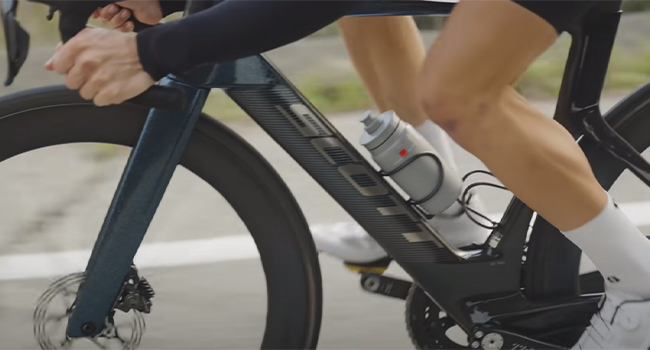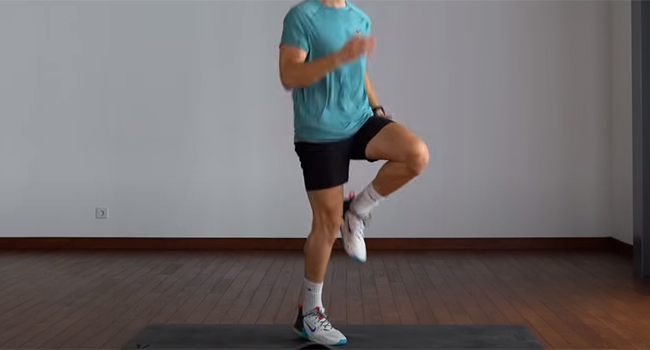A bicycle ride is an excellent form of exercise, particularly if you suffer from arthritis, particularly knee osteoarthritis. You can do it outside, at a gym, or at home.
No, cycling is not likely to make arthritis worse. It is considered one of the most effective workouts for people with arthritis. Cycling is low-impact, providing a good workout without putting excessive stress on the joints.
In this blog post, we’ll dive into the world of arthritis and cycling, exploring why this low-impact exercise can be incredibly beneficial for those living with arthritis.
Cycling With Patellofemoral Arthritis: 5 Joint Risks

While some might worry that cycling could worsen joint pain, research indicates that the benefits greatly overcome the risks. Here’s what you need to know about how cycling can help manage and alleviate arthritis symptoms.
Cycling Can Ease Joint Pain and Stiffness
The pain and stiffness of arthritis can be debilitating and depressing. Fortunately, cycling can assist in this regard as it is a low-impact exercise requiring less joint stress. Here are some benefits to be enjoyed:
Cycling acts as a natural painkiller: Cycling stimulates the release of endorphins that could assist in reducing the sensations of pain in your joints.
Cycling mechanics are smooth and gentle: Unlike high-impact workouts that can accelerate arthritis progression, cycling’s low-impact mechanics are primarily vertical, allowing for a proper distribution of weight to support good joint lubrication, thereby reducing joint inflammation.
Cycling can prevent further joint damage: Research has shown that cycling has a protective effect on joints. For instance, a study published in the Journal of Aging and Physical Activity revealed that cycling non-weight-bearing joints could protect against progressive cartilage loss for many individuals with arthritis.
Muscle Strengthening Benefits
Regarding arthritis, muscle strengthening is crucial because strong muscles can help support our joints, reducing the risk of further damage. Here are some ways cycling can help make muscles stronger in people with arthritis:
- Cycling enhances the strength of leg muscles: Cycling provides a low-impact, full-body workout, which can work towards strengthening the leg muscles, particularly the quadriceps, hamstrings, and calf muscles. These muscles support the knee and hip joints, which are commonly affected by arthritis.
- Cycling supports shock absorption: During cycling, the force from one’s foot hits the pedal, and that force finds its way toward the muscles in your legs, which act as shock absorbers. Strengthening these muscles can absorb shock during everyday activities like walking or running, reducing joint stress.
Increased Range of Motion for Joints
Restricted joint movement is familiar with arthritis, which could severely affect daily activities. Nevertheless, cycling can improve joint mobility and enhance overall flexibility. Below are some ways cycling can achieve this:
- Cycling increases joint flexibility: Cycling can be an excellent tool to improve flexibility and range of joint motion. Cycling movements can help to stretch and flex joints such as knees and ankles.
- Cycling enables daily activities: Improved joint flexibility and range of motion help make everyday activities more accessible, reducing dependence on others. Research has shown that range of motion can be enhanced in those with knee osteoarthritis by cycling twenty minutes daily for four weeks.
Improved Cardiovascular Health Through Cycling
People with arthritis may struggle to engage in repetitive weight-bearing exercises that increase the risk of joint damage. Conversely, cycling can provide low-impact cardiovascular activity with similar benefits without endangering the joints. A few ways cycling improves cardiovascular health:
- Cycling increases heart rate, thereby improving cardiovascular well-being: By contributing to the increase in the heart rate, cycling provides a cardiovascular workout that could improve blood and oxygen circulation.
- Cycling reduces heart disease and stroke: Research indicates that cycling’s low-impact nature is crucial in lowering heart disease and stroke risks. Specifically, studies suggest that people with arthritis could enjoy the benefits of regular cycling.
- Cycling alleviates weight-bearing-recommended exercise limitations: Cycling allows for cardiovascular exercise without requiring weight-bearing movement on the joints, which makes it particularly beneficial for people with arthritis.
Relevant Studies Supporting These Benefits
Studies have been conducted on cycling and its potential benefits for individuals with arthritis. Some studies support the claims made in this post:
- The Journal of Physiology included participants who had rheumatoid arthritis and trained 3 times a week for 8 weeks. They improved their muscle strength (quadriceps and hamstrings) and muscle power.
- A study from the University of North Carolina Chapel Hill School of Medicine revealed that cycling was equally effective in reducing knee joint pain as Tai Chi.
- A research article published in “Nature” suggested that people who cycled for 3 years had less cartilage loss than those who didn’t cycle.
Cycling Makes Arthritis Worse: Pros and Cons

Each option has advantages and drawbacks. We’ll explore the pros and cons of each and things to keep in mind when choosing a bike.
Indoor Cycling
Indoor cycling allows for convenience and comfort regardless of the weather or time of day. Many fitness facilities and gyms nowadays offer indoor cycling classes or have cycling trainers available for use. Here are some benefits and drawbacks of indoor cycling.
Advantages
- Cycling is done indoors, eliminating weather conditions.
- Your workout’s resistance, speed, and duration are customizable to your fitness level and goals.
- Tracking heart rate, calories burned, and distance using a screen or device is easy.
- Guided programs, virtual classes, music, and podcast listening are available while cycling.
Disadvantages
- Stationary cycling can be monotonous and boring without any visuals to interact with.
- Depending on the type of equipment used or the membership fee, the expense is a factor to consider.
- It can be less challenging as you do not need to handle obstacles like hills, wind, traffic, roads, or trails.
Outdoor Cycling
Outdoor cycling allows for outdoor exploration, with some fresh air, while enjoying the beauty of nature. Most people cycle outside as a form of transportation, exercise, or leisure activity. The benefits and drawbacks are as follows:
Advantages
- Outdoors can support emotional health and mood stability.
- Explore new places, meet people, and participate in cycling groups or events.
- The terrain and weather provide varying difficulties, thus challenging the cardiovascular system and the body’s strength.
Disadvantages
- Safety risks include accidents, injuries, theft, or vandalism.
- Avoiding cold, possibly snowy, icy conditions can make cycling unsuitable in some areas.
- Additional gear to invest in, like helmets, lights, locks, and clothing.
Choosing a Bike for Those with Arthritis: Factors to Consider
Arthritis can make cycling challenging, but the right bike can make a significant difference. Here are some factors to consider.
Type
Different types of bikes cater to specific preferences. Each class has advantages and disadvantages that must be considered based on the cyclist’s needs and goals. Here are some examples:
- Road bikes: Lightweight and faster, but they may put more pressure on your joints.
- Mountain bikes: Off-road bikes designed to handle trails and systems off-road.
- Hybrid bikes: Some combination of road bike efficiency with mountain bike stability.
- Recumbent bikes: Designed to sit comfortably while being more accessible to transport and maneuver.
Size
The size of the bike is crucial in achieving the best cycling performance. An appropriate size for the cyclist’s height, weight, and body proportion ensures comfort, which is essential in preventing joint pain, fatigue, or injury.
Fit
A proper fit leads to healthy cycling. Adjusting the seat position, handlebar, and pedals can prevent strains, discomfort, or joint wear and tear. Professional help is always an option to ensure that the fit of your bike is appropriate for preventing joint pain, injury, or discomfort.
Cycling Tips for Arthritis Patients

You don’t have to give up cycling just because of arthritis. Following these tips, you can make your cycling experience more comfortable and safe.
Warming Up and Cooling Down
A warm-up and cool-down can help reduce injury risks and make cycling more comfortable for individuals with arthritis. Here are some tips for warming up and cooling down before and after cycling.
Warming Up
- Start slowly: Begin with a few minutes of gentle cycling or stretching to warm up your muscles.
- Stretch: Focus on stretching your hip flexors, quads, hamstrings, and calves before getting on your bike.
- Start with low resistance: Begin cycling with low resistance and gradually increase as your muscles warm up.
Cooling Down
- Gradually decrease speed and resistance: Slowly reduce your speed and resistance in the last few minutes of your ride.
- Stretch: Focus on stretching the same muscle groups you pushed before cycling.
- Hydrate: To avoid dehydration, drink plenty of water.
Types of Appropriate Clothing and Gear
Wearing appropriate clothing and gear can improve cycling comfort for arthritis sufferers. Here are some tips for choosing clothing and equipment for cycling:
- Comfortable clothing: Choose loose-fitting, breathable clothes that allow you to move freely.
- Padded shorts: Wear padded shorts or a padded seat cover to reduce pressure on your joints.
- Proper footwear: Wear shoes with stiff soles and good arch support to help distribute pressure evenly across your feet.
- Gloves: Wear gloves with padding to reduce pressure on your hands and wrists.
Hydration and Avoiding Overexertion
Proper hydration and avoiding overexertion are essential for individuals with arthritis who are cycling. Here are some tips for staying hydrated and avoiding overexertion:
- Hydrate before, during, and after cycling: Drink plenty of water to stay hydrated.
- Take breaks: Relax and stretch frequently during your workday.
- Listen to your body: Slow down or take a break if you experience pain or discomfort.
Exercise Programs Should Be Consulted with a Doctor
Consulting with a doctor before starting an exercise program is crucial for individuals with arthritis. Here are some tips for consulting with your doctor:
- Discuss your goals: Let your doctor know your goals for cycling and how they fit into your overall exercise program.
- Share your concerns: Discuss your concerns about cycling with arthritis.
- Follow your doctor’s advice: Work with your doctor to develop a safe and effective cycling plan.
Conclusion
We’ve debunked the myth and unraveled the facts, hopefully changing how you view cycling and arthritis. The bike may just be an arthritis sufferer’s best friend. Not only does cycling help reduce joint pain and stiffness, but it also strengthens muscles, improves joint mobility, and boosts cardiovascular health.
Whether you ride indoors or outdoors, remember the importance of choosing the right bike, warming up, cooling down, and never pushing yourself too hard. Of course, consult your doctor before jumping on the saddle and follow their advice.
So, why not give cycling a go? It could be your ticket to not just managing your arthritis symptoms but improving your overall health and well-being.
FAQs
Is Bike Riding Good For Knee Arthritis?
Yes, bike riding is beneficial for knee arthritis. It’s a low-impact exercise that strengthens muscles around the knee, improves flexibility, and enhances cardiovascular health. However, to minimize strain on the knees, ensure proper bike fit and technique.


